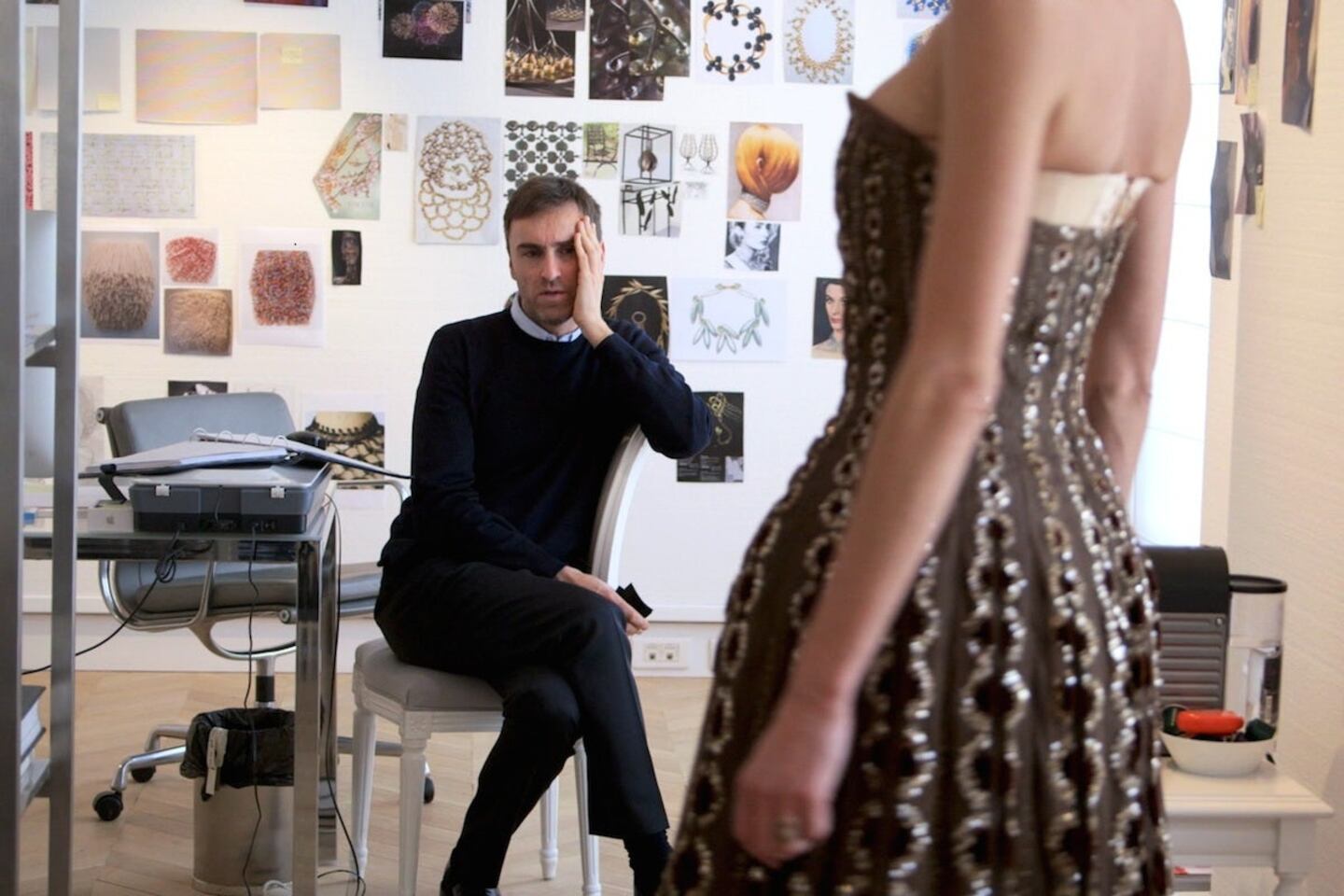
The Business of Fashion
Agenda-setting intelligence, analysis and advice for the global fashion community.

Agenda-setting intelligence, analysis and advice for the global fashion community.

LONDON, United Kingdom — We must start with the assumption that in Dior and I, Frédéric Tcheng, the director — who also worked on The Last Emperor and The Eye Has to Travel, close-up portraits of Valentino Garavani and Diana Vreeland, respectively — is taking us as near as many will ever get to fly-on-the-wall honesty about the closed world of fashion, which continues to fascinate audiences, in part, precisely because it is so rarely revealed.
There are many reasons for fashion’s reticence to reveal its inner workings, the most potent being that creativity in any field is often messy and fraught, and if the public know too much the mystery would be spoiled. That is why theatre rehearsals are closed affairs, writers are reluctant to share their first drafts and films are made under great secrecy. Too much light destroys the magic.
By viewing this film, we are peeping into a family affair — and all families have their secrets.
By viewing this film, we are peeping into a family affair — and all families have their secrets. When we go into the ateliers of a fashion house, we are, in effect, entering the kitchen where various recipes might be tried before the dish is eventually ready for serving and, during that process of trial and error, tempers are lost, frustrations bubble over and relationships become strained. We cannot expect to be shown everything. Yet Dior and I seems to be very true to the spirit of life in a great French fashion house.
The film is also, in part, a public relations exercise for the house of Dior, of course, intended to calm the nervous and re-assure its disciples after the lows of the Galliano affair. Indeed, one of the primary reasons for Dior to participate in the making of this film was to establish Simons in his new role with sufficient authority for him to be seen as the ideal man for the job. And I think that many viewers will be convinced by the rightness of the casting, so to speak.
ADVERTISEMENT
I most certainly was. Raf Simons comes across very clearly as a quiet, even endearing personality who is easing himself into a role that others may have tackled more bombastically. He appears to be genuinely modest and shy, but behind all of the gentle smiles and softly articulated suggestions, his determination is clear to see. Indeed, a soft voice and a tentative manner can often hide the iron will and steely attitude that are the prerequisites for success in this industry.
Although there is constant discussion between the designer and his team in the studio, there can only be one creative director. Simons knows this, as we all do. And there is a marvellously telling moment in the film, when this tension bubbles to the surface: things are heating up during the fittings, time is ticking, technical difficulties abound and the maestro needs a key member of the staff who is not present. Where is she? In New York, attending to a client. A slight frown crosses the brow of Raf Simons, who, until now, has seemed untroubled. His mouth, which we have already noticed can tighten up if things become a little tense, is suddenly very straight indeed. Simons questions the wisdom of such a decision.
But the response of Catherine Riviere, directrice of Dior haute couture, is crisp: "When a woman spends €350,000 a season, we do not say no." Simons replies coldly, "You also cannot say no to me," to which Riviere fires back, with brutal frankness: "You cannot have it all." Which of the two sides reflects the views of Dior chief executive, Sydney Toledano, is left to our imagination.
See this film. It paints a picture of a hidden world, as openly and fully as any documentary of a normally closed and secret world can be expected to do.
The larger-than-life Italian designer, who built a fashion empire based on his own image, died in Florence last Friday.
This week, designers, collectors and major fashion brands will flock to Milan’s design fair. Also, LVMH reports first-quarter sales.
The Italian designer, best known for vibrant animal prints and sand-blasted denim, was 83.
Louis Vuitton marketing chief Stefano Cantino is joining the Kering flagship as it attempts to reignite growth under CEO Jean-François Palus and creative director Sabato de Sarno.